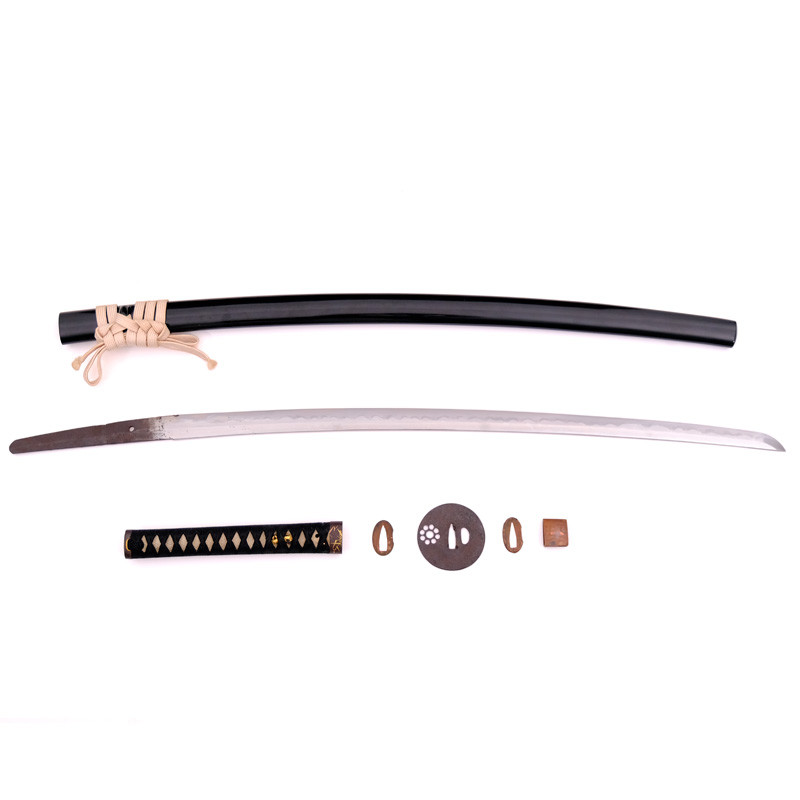
















More informations about this product
| Total Weight | 1.187 kg | |
| Weight without Saya | 0.942 kg | |
| Blade Weight | 0.686 kg | |
| Full Blade length (Toshin) | 91.30 cm | |
| Nagasa | 72.10 cm | |
| Nakago Length | 19.50 cm | |
| Sori (curvature) | 1.80 cm | |
| Kissaki Length | 2.81 cm | |
| Moto Haba | 3.05 cm | |
| Saki Haba | 1.93 cm | |
| Moto Kasane | A = 0.51 cm B = 0.65 cm |
|
| Saki Kasane | A = 0.35 cm B = 0.40 cm |
|
| Curvature | Koshi Zori | |
| Type Kissaki | Chu Kissaki | |
| Blade Structure | Shinogi Zukuri (diamond shaped) | |
| Mune | Iori Mune (triangular) | |
| Hamon | Large Gunome Midare in Nioi deki and nie, with Mune Yaki and Tobi Yaki (similar to a Hamon Hitatsura) | |
| Hada | Itame Hada and Masame Hada | |
| Boshi | Ko Maru Kaeri | |
| Nakago | Ubu, Katana Mei signed Taira Sadamori on face Omote, 1 Mekugi Hana, Kiri Yasurime, Futsu Gata shape, Nakago Jiri Ha Agari Kurijiri (Disymetric U) | |
| Saya | Length of 80.5 cm for a weight of 243g, Kuroro glossy black lacquer, Sageo silk color Ivory. | |
| Tsuka & Tosogu (Tsuba, Menuki, Fuchi Kashira) |
- Tsuka: 25.4 cm long for 108g. Same white, black silk Tsumami Maki braid. - Menuki : golden crab motif (symbol of the incarnation of the Taira or Heike warriors -according to the reading of the Kanji) - Tsuba : Maru Gata (round) rounded border Maru Mimi Gata. 1 Kozuka Hana Dimensions 7.87 x 7.75 x 0.32 cm for weight of 100g. in Sukashi opening Symbol of the Kuyomon, Mon of the Hosokawa clan of the Higo domain - Habaki: 31g Muji copper (unembossed) - Seppa: 2 copper crenelated seppa for a total weight of 8g |
|
| Study & Team Review |
Taira Sadamori 平定盛, also known as Hikosuke 彦助, was a blacksmith of the Taira Takada school who forged between 1532 and 1558. He was the son of Taira Nagamori 平長盛, who was considered one of the best blacksmiths in this school. Between 1504 and 1644, there were 4 generations of blacksmiths named Taira Sadamori, this one, Hikosuke, represents the 2nd generation. This blade was forged during the Tenbun era (1532 – 1555). |
|
Share your opinion
error Your review appreciation cannot be sent
feedback Report comment
check_circle Report sent
error Your report cannot be sent